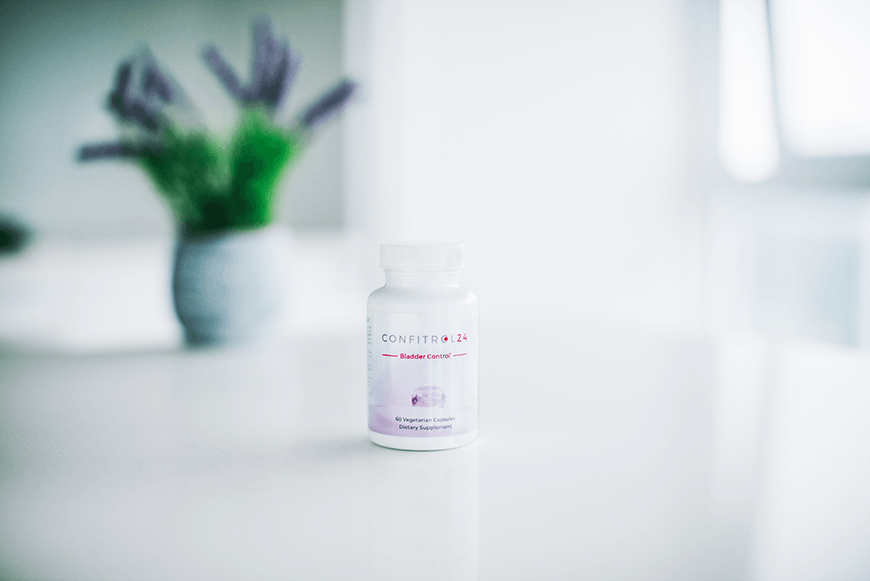Has a sneeze caught you off guard and left you crossing your legs a bit too late? Or have you felt a leak you weren’t expecting while in a fit of laughter?
If so, you’re not alone. Millions of women experience these little “oops” moments. While they may seem like a minor inconvenience, they can indicate that something more is going on beneath the surface.
The unintentional loss of urine, commonly known as urinary incontinence, can sneak up on you after pregnancy, during menopause, or even as a natural part of aging.
Although many women experience it, few talk about it. But there’s nothing to be embarrassed about. And here’s the good news – those drips don’t have to be a regular part of your life.
Today, we discuss everything you need to know about urinary incontinence – what it is, why it happens, and what you can do about it.
We have the information and tips to help you regain control, whether you’ve been dealing with leaks for years or just started noticing them. Because, let’s face it, you deserve to sneeze, laugh, and move through life without this particular surprise.
Let’s begin.
What is Urinary Incontinence?
Urinary incontinence is one of those things no one really talks about openly. But it’s more common than you think. Simply put, incontinence is the accidental loss of urine. Those little leaks that happen when you least expect it – during a sudden sneeze, a good laugh, or while lifting something heavy.
There are a few different types of urinary incontinence:
- Stress Incontinence – This is the most common, occurring when pressure on your bladder causes a leak.
- Urge Incontinence – This is a sudden, intense need to go right now, but not always making it to the bathroom in time.
- Mixed Incontinence – This is a combination of stress and urge incontinence.
- Overflow Incontinence – This is when your bladder doesn’t empty completely, resulting in frequent dribbling.
- Functional Incontinence – This is when mental or physical barriers make reaching the bathroom in time difficult.
While it may be easy to dismiss a few drips as just part of getting older, it’s essential to recognize that these leaks are often a sign that your bladder or pelvic floor muscles are weaker than they used to be, which is often a normal part of aging.
The good news is that there are numerous ways to manage and, in some cases, reverse urinary incontinence so you can get back to living your life without worrying about where the nearest bathroom is.
Before we present strategies, let’s discuss how urinary incontinence can affect your daily life.
How It Impacts Daily Life
Let’s be honest. Those leaks are about more than needing to change your underwear more frequently. Yes, they can make you second-guess your outfit choices or shy away from activities you once loved, but the emotional toll is real, too.
While going for a run, dancing, or enjoying a good belly laugh may feel like a gamble, dealing with urinary incontinence can make you feel embarrassed or frustrated, negatively impacting your confidence.
Furthermore, since it isn’t exactly a topic that naturally comes up during brunch with friends, the fear of someone noticing – or worse, commenting – can keep you from attending social situations.
When it seems like everyone else has it all together, you can start to feel isolated. Many women avoid long outings, bow out of girls’ trips, or skip the occasional yoga class rather than experience the anxiety of managing leaks.
Even if your friends don’t notice, the worry that they might is often enough to keep you planted at home instead of living life to the fullest.
So, what’s behind those unexpected leaks?
Causes of Urinary Incontinence
There is no one-size-fits-all answer to urinary incontinence, but there are a few common culprits. Sometimes, the cause is straightforward; other times, it’s a combination of these factors that leads to incontinence.
The most significant factor is often weakened pelvic floor muscles. These muscles support your bladder, acting like a hammock. Leaks can happen more easily when they lose strength due to pregnancy, childbirth, or age.
Hormonal changes due to menopause also play a role. Menopause can lead to a drop in estrogen, which makes the tissues in your bladder and urethra less elastic and more prone to leaks.
Additionally, obesity, which puts extra pressure on your bladder, and chronic coughing from allergies or smoking can wear down those important muscles over time, contributing to urinary incontinence.
Understanding the cause is the first step toward finding a solution that works for you. Because who has the time to let a little leak get in the way of living your best life?

Common Signs
While occasional leaks are expected, when they become a regular part of your life, it’s time to take action. Ignoring it isn’t the answer and could actually make things worse over time.
So, how do you know if those little leaks are more than just a one-off oops? First, pay attention to the signs your body gives you.
Of course, the most recognizable symptom of urinary incontinence is leaking urine during sneezing, laughing, exercising, or other activities.
Do you find yourself crossing your legs every time you giggle? Do you sprint to the bathroom at the first sign of a sneeze? These are signs your bladder may need a little extra support.
More frequent trips to the bathroom or waking up multiple times at night to pee could also be red flags. Additionally, sudden, strong urges to urinate that seemingly come out of nowhere, leaving you scrambling for the nearest bathroom, may indicate weakening pelvic floor muscles.
Fortunately, the right strategies can help you take control of the situation. Next, we explore some natural approaches for managing or reversing urinary incontinence.
Natural and Lifestyle Remedies
Life’s too short to let a little leak hold you back from doing what you love and enjoying each day. Early intervention, whether through lifestyle changes, exercises, or innovative approaches, can prevent further weakening of the bladder or pelvic wall.
Here are five natural approaches to help you regain your confidence and freedom.
Strengthen Your Pelvic Floor
Strengthening your pelvic floor is the best way to tackle urinary incontinence from the ground up.
Kegels can significantly improve bladder support. To do a Kegel, tighten the muscles you use to stop the flow of urine. Hold for a few seconds, and then release. Aim to do a few sets each day.
But Kegels aren’t the only exercises that can help. Pilates and yoga help enhance overall core strength and stability, boosting bladder support. Try mixing things up until you find a workout that makes you feel strong and confident.
Improve Your Diet
What you consume can be a sneaky saboteur behind urinary leaks.
Caffeine and alcohol can irritate the bladder and lead to more frequent bathroom trips. Spicy foods and acidic fruits can exacerbate the problem.
Cutting back on these bladder “agitators” can make a significant difference. Opt for a balanced diet rich in fruits, vegetables, and whole grains. A well-balanced diet helps your bladder and supports overall health and wellness.
Stay Hydrated
Staying hydrated without overloading the bladder is crucial, and it’s all about balance.
Drinking adequate amounts of water keeps your bladder healthy, but drinking too much can increase the frequency of bathroom trips. It’s a fine line between staying dry and staying hydrated.
To avoid overloading your bladder, reduce fluid intake close to bedtime and spread your water intake throughout the day. Aim for at least eight glasses of water, adjusting based on activity level and personal needs.
Maintain a Healthy Weight
Maintaining a healthy weight can help support a healthy bladder.
Carrying extra weight puts additional pressure on your bladder, contributing to leaks. Maintaining a balanced diet and regular exercise helps alleviate this pressure. To keep your weight in check, incorporate a mix of cardio and strength training exercises.
Even small changes like making healthier food choices, taking daily walks, or choosing the stairs can make a big difference over time. Every little step counts toward keeping your bladder in better shape and helping you feel more comfortable and confident.

Consider Supplements
Even with the best lifestyle adjustments, your bladder might need a little extra support. That’s where supplements come in handy.
Natural supplements can help strengthen your bladder and pelvic floor, offering additional support to your natural efforts. Supplements like HerSolution Confitrol24 contain research-backed ingredients to improve muscle tone and elasticity, support bladder health, and prevent oxidative damage to the urinary tract.
When considering adding a supplement to your daily routine, opt for products manufactured by reputable brands with real-world effectiveness to help with bladder strength and overall function. Feel more secure and in control with natural bladder control supplements.
Don’t Live in Fear of the Next Sneeze or Laugh
Urinary incontinence is entirely manageable with the right strategies. If you’re noticing more leaks or feeling overwhelmed, don’t hesitate to explore lifestyle changes and seek help from a medical professional. And consider HerSolution Confitrol24 for an extra boost to strengthen your bladder.
Embrace the confidence to live freely and laugh heartily. After all, you deserve to enjoy every moment.


